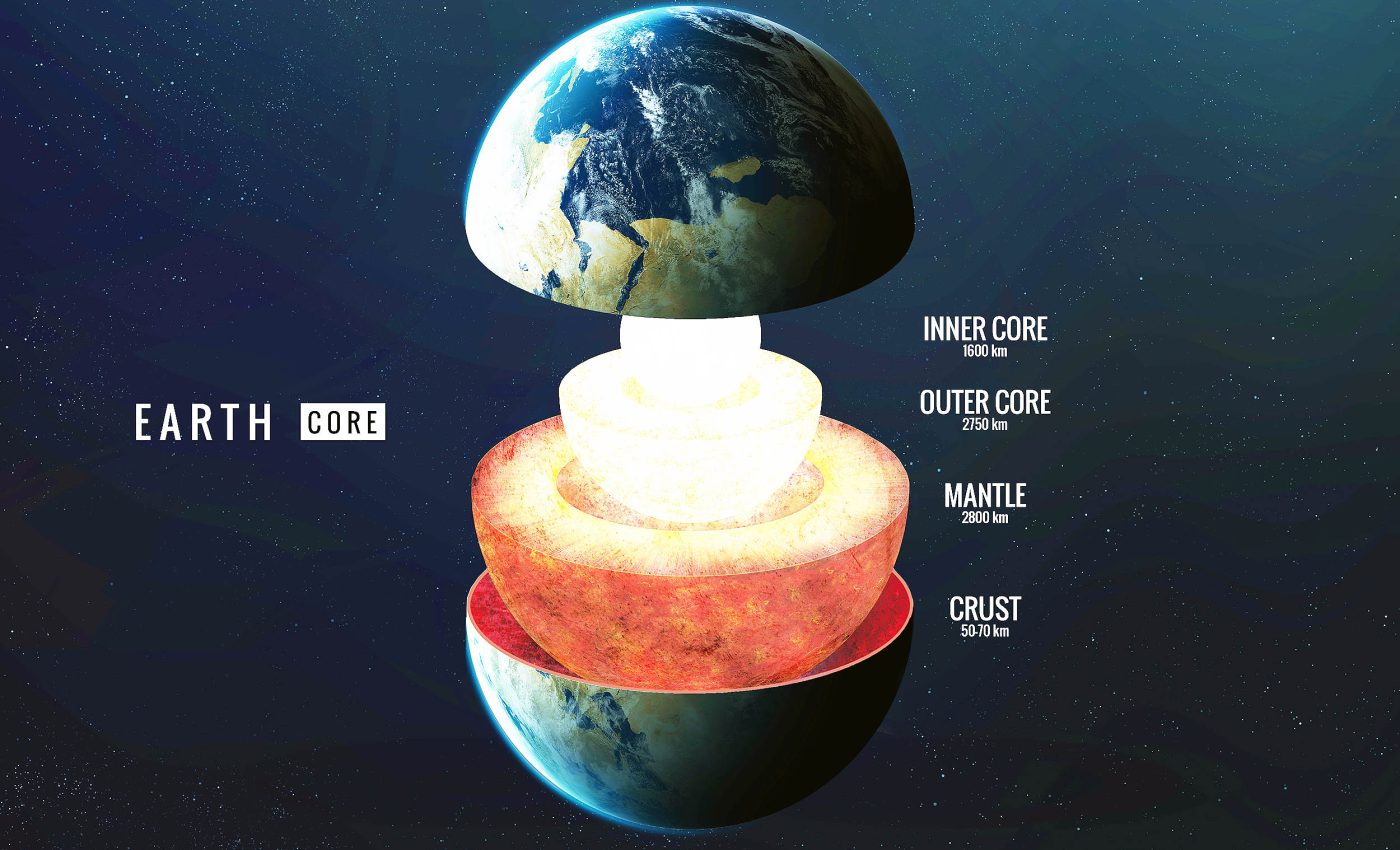
Earth’s inner core is not solid, it is 'shape-shifting' - time for textbooks to be rewritten
Hidden beneath layers of rock and molten metal, Earth’s inner core has long been viewed as a solid sphere. However, a recent study suggests that the surface of the inner core is undergoing structural alterations and is currently changing shape.
This implies that Earth’s center is far more dynamic than previously believed, which could completely transform our understanding of the planet’s evolution, its magnetic field, and the way in which it rotates.
These revelations not only deepen our knowledge of Earth’s interior but also raise intriguing questions about the forces at play beneath our feet.
Understanding Earth’s interior – the basics
Earth’s interior is like a giant layer cake with four main layers: the crust, mantle, outer core, and inner core.
The crust is the thin, outermost layer where we live, and it’s broken into massive plates that constantly shift. Beneath it, the mantle extends about 1,800 miles deep and is made of hot, semi-solid rock that slowly moves.
This movement drives plate tectonics, causing earthquakes, volcanic eruptions, and even the formation of mountains over millions of years.
The deeper you go, the hotter it gets, with temperatures in the mantle reaching thousands of degrees.
Beneath the mantle, the outer core consists of molten iron and nickel, swirling around and creating Earth’s magnetic field.
This invisible shield protects us from harmful solar radiation and keeps compasses pointing north. At the very center, the inner core is a solid ball of iron and nickel, hotter than the surface of the sun – over 9,000°F.
Despite the intense heat, the crushing pressure keeps it solid. Scientists can’t drill that deep, so they study seismic waves from earthquakes to understand what’s going on down there, which is how this study was conducted.
New perspective on Earth’s inner core
The inner core, which is located 3,000 miles (4,800 kilometers) below the Earth’s surface, was presumed to be a solid sphere.
In the current study, the scientists were primarily interested in understanding the way in which the inner core rotates, and in mapping its decelerating movement.
They set out to explore why the inner core appeared to rotate at a rate that was slower than Earth’s rotation before speeding up again in 2010.
To investigate, the experts analyzed decades of seismic data, which led to their unexpected discovery that the surface of the inner core is changing shape.
Driven by seismic waves
In the analysis of multiple seismic waveforms, a particular set of data stood out as unusual. Further analysis of this data led to the conclusion that the Earth’s inner core is not solid but is able to change shape.
The methodology was simple. The scientists leveraged seismic waveform data from various earthquakes that occurred between 1991 and 2024 near the South Sandwich Islands in Antarctica.
Analysis of these waveforms revealed one dataset with unprecedented characteristics, which hinted at physical upheavals inside the inner core.
The transformative inner core
The analysis of this extensive data set revealed a dynamic process that was previously unaccounted for in geological models.
The seismic waveform data suggested that the inner core is dynamic and is undergoing continuous and complex temporal reshaping. This challenges the notion of the inner core’s long-term stability.

The researchers found that the inner core’s shallow boundary may undergo viscous deformation, which gradually and repeatedly alters its shape due to the intense pressures and interactions with the turbulent outer core.
The turbulent outer core
The researchers noted that the physical interactions between the inner and outer core seem to be triggering these structural changes.
The molten outer core, with its turbulence, was never before known to disrupt its inner counterpart within a human timescale.
Now, however, it appears that the outer core is disturbing the inner core by forcing the deformation of its surface layer. This opens up a window to explore the previously hidden dynamics within the Earth’s core.
Professor John Vidale, who led the research, believes that the edges of the inner core may have deformed by over 100 meters in some areas.
“In all likelihood, this finding doesn’t affect our daily lives one iota, but we really want to understand what’s happening in the middle of the Earth,” said Professor Vidale.
Further implications of the research
This revelation has the power to improve our comprehension of Earth’s thermal and magnetic fields. It also sheds new light on the intricate interactions between the inner and outer core.
According to the researchers, it is possible that these changes are linked to alterations in Earth’s magnetic field.
“The magnetic field has had jerks at various times in the past few decades, and we’d like to know if that is related to what we’re seeing at the inner core boundary,” said Professor Vidale.
A clearer understanding of these processes could refine our models of geomagnetic field generation, plate tectonics, and even the planet’s long-term climate stability.
Many questions remain
This study not only challenges existing geological models but also serves as a reminder that even the most fundamental aspects of our planet remain open to re-examination.
In this instance, the inner core – once thought to be a static, solid mass – appears to be in constant motion, changing and shape-shifting over time.
Yet, many questions remain. What governs the pace of these changes? How do they influence the broader geodynamic processes of our planet? Could similar mechanisms be at play in the cores of other celestial bodies?
As technology advances and seismic data grows more precise, the inner depths of our planet will no longer be a distant enigma but a frontier waiting to be explored fully.
The full study was published in the journal Nature Geoscience.
—–
Like what you read? Subscribe to our newsletter for engaging articles, exclusive content, and the latest updates.
Check us out on EarthSnap, a free app brought to you by Eric Ralls and Earth.com.
—–













